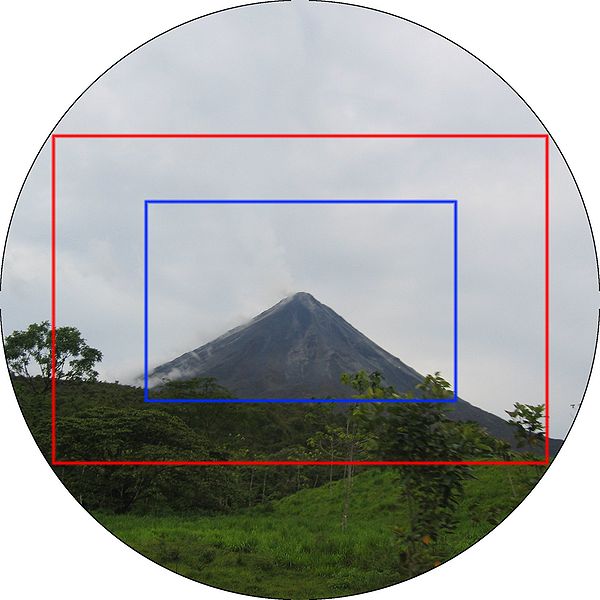I was confused by the same thing for a long time. Why didn't a 50mm film lens look like a 75mm on my apsc camera?
Here is a way of looking at it. imagine an 8x10 picture. Lets say that is what a 50mm lens is projecting into the camera. lets cut a 1" square out of the middle. it doesn't matter if the camera is apsc, full frame, medium format or large format, that 1 inch square does not change. It will look the same from any camera. out of that 8x10 picture, lets say an apsc sensor is 3x5. it is like taking a 3x5 photo out of the middle of that 8x10. Well a full frame sensor is larger, right? lets say it is 5x7. it is taking a 5x7 picture out of that 8x10. The image is larger because a larger area of light was recorded, not because the lens magnified it different.
Another example. lets take a telescope that has 50x magnification. Lets look at a car that is far enough away that the bumpers are right on the edge of the picture. You can just barely see the whole car. Lets say that is the full frame sensor. now lets take masking tape and put it over the top, bottom and both side edges of the eye piece. you can now only see a portion of the car. The magnification has not changed. The telescope is still 50x magnification. You are simply seeing a smaller portion of the image because tape is blocking it. A smaller sensor sees a smaller portion of the image. A larger sensor will see a larger portion of the image but the magnification is the same. The lens does not change. a 50mm lens is a 50mm lens on any camera, just like a 50x telescope is a 50x telescope no matter what portion you are able to see.
Any 50mm lens will look the same on your camera be it an old film lens or a brand new digital lens.
Here is what crop factor is. Lets take 2 telescopes. One is 50x and can see the whole car. the other has tape on the eye piece blocking part of the car. How much magnification do we need to see the whole car with part of the image blocked by tape? If you assume that the 50x telescope is compared to a full frame sensor, and the telescope with the tape is an apsc camera, the telescope would have to be 33.333x to see the whole car. That is crop factor. A 50mm lens sees the same size image on an apsc camera that a 33.333mm lens sees on a full frame camera. Since the smaller sensor cuts away part of the car, you can zoom out so to speak, to get the whole car back in the picture by using a wider angle lens (one with less magnification). Any 50mm lens will always have the same magnification and give the same image on your camera. You can use a wider lens to duplicate what a full frame sensor sees.
It is often refereed in the other direction though. if you have a 35mm lens on an apsc camera, it sees the same image size as a 52.5mm lens on a full frame camera (35mm x 1.5 crop factor = 52.5). You basically need a wider angle lens on a smaller sensor to see the same thing as a camera with a larger sensor.
I hope that analogy wasn't confusing. Remember everybody, the technical answer is confusing. That is why people have a hard time grasping it until they already understand it. That is why there are no posts asking this with a simple answer that ends the thread. We need some analogy's like this stickied somewhere so that people can understand crop factor (preferably some analogy's that are written a little more clear and concise than mine, lol). I went to Utah valley University and the University of Utah for engineering (dropped out after 3 years due to money but had a 3.8 gpa on a 4.0 scale) and did graduate phi theta kappa from a state school with a degree in gunsmithing. I may not be the smartest but I'm certainly not an idiot and I didn't understand it for quite a while (and was surprised that a 50mm film lens didn't act like a 75mm digital lens), until it was explained to me properly. Or maybe I am an idiot in which case us idiots need simple answers!



Edit:
Just a little related info. A 50mm full frame lens (old film lens if you like) and a new designed for digital (and designed for apsc) lens have the same magnification. That is why they both work the same on your camera. The full frame has larger glass so that it can project a larger image, large enough to cover a full frame sensor (or the equivalent size in film). The lens designed for apsc has glass that is smaller in diameter that projects an image just large enough for an apsc sensor (ti's generally cheaper to make smaller glass). They still have the same magnification, but if you use the apsc lens on a full frame camera, the corners will be dark as the glass is not big enough around, but the magnification will still be the same.


 Similar Threads
Similar Threads 















 Post #14 by DaveHolmes
Post #14 by DaveHolmes








